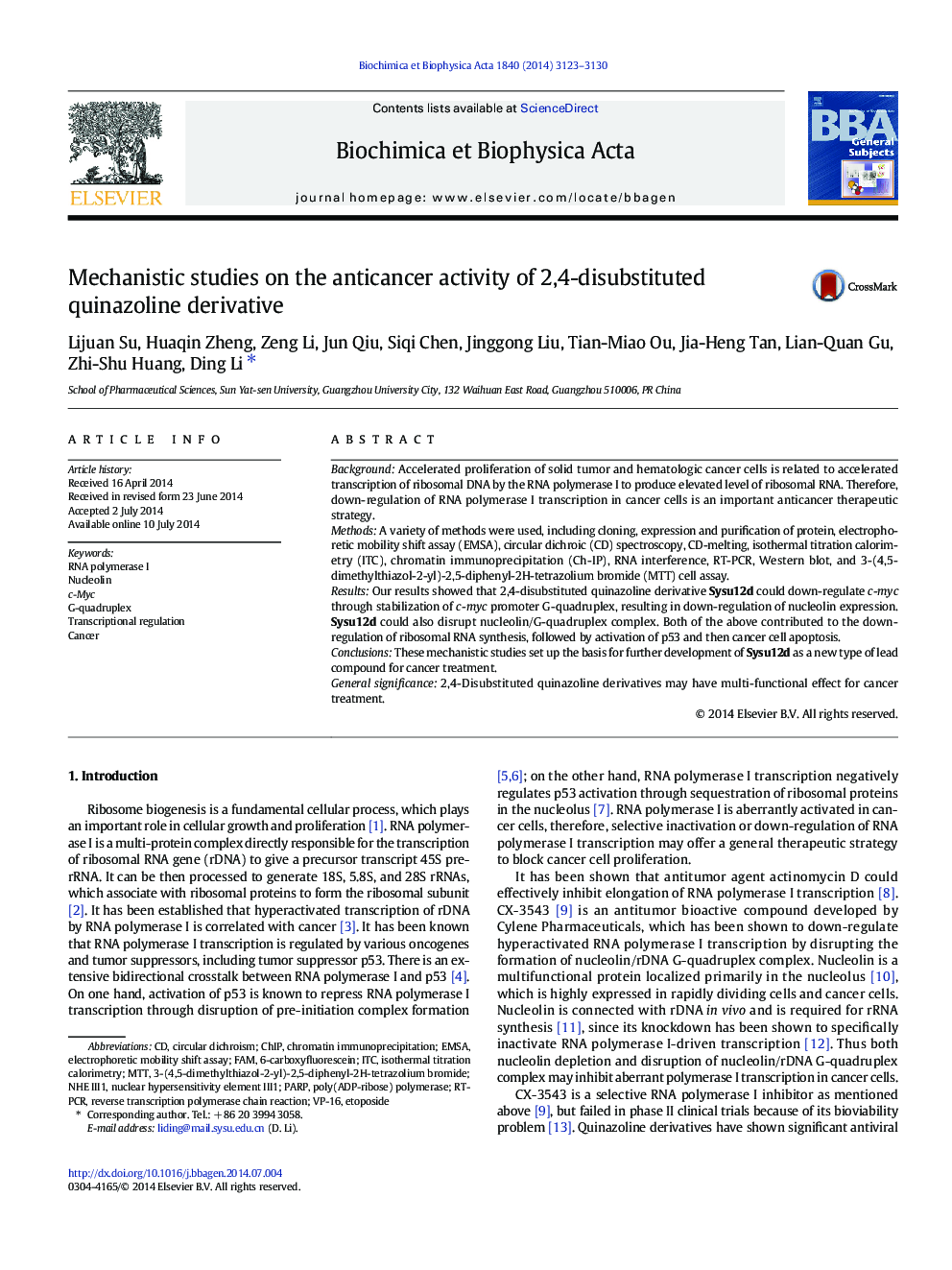| Article ID | Journal | Published Year | Pages | File Type |
|---|---|---|---|---|
| 1947535 | Biochimica et Biophysica Acta (BBA) - General Subjects | 2014 | 8 Pages |
•Quinazoline derivative Sysu12d down-regulated c-myc, resulting in reduced nucleolin.•Sysu12d could also disrupt nucleolin/G-quadruplex complex.•Both of the above contributed to the down-regulation of ribosomal RNA synthesis.•This caused activation of p53 and then cancer cell apoptosis.•These set up the basis for further development of Sysu12d for cancer treatment.
BackgroundAccelerated proliferation of solid tumor and hematologic cancer cells is related to accelerated transcription of ribosomal DNA by the RNA polymerase I to produce elevated level of ribosomal RNA. Therefore, down-regulation of RNA polymerase I transcription in cancer cells is an important anticancer therapeutic strategy.MethodsA variety of methods were used, including cloning, expression and purification of protein, electrophoretic mobility shift assay (EMSA), circular dichroic (CD) spectroscopy, CD-melting, isothermal titration calorimetry (ITC), chromatin immunoprecipitation (Ch-IP), RNA interference, RT-PCR, Western blot, and 3-(4,5-dimethylthiazol-2-yl)-2,5-diphenyl-2H-tetrazolium bromide (MTT) cell assay.ResultsOur results showed that 2,4-disubstituted quinazoline derivative Sysu12d could down-regulate c-myc through stabilization of c-myc promoter G-quadruplex, resulting in down-regulation of nucleolin expression. Sysu12d could also disrupt nucleolin/G-quadruplex complex. Both of the above contributed to the down-regulation of ribosomal RNA synthesis, followed by activation of p53 and then cancer cell apoptosis.ConclusionsThese mechanistic studies set up the basis for further development of Sysu12d as a new type of lead compound for cancer treatment.General significance2,4-Disubstituted quinazoline derivatives may have multi-functional effect for cancer treatment.
